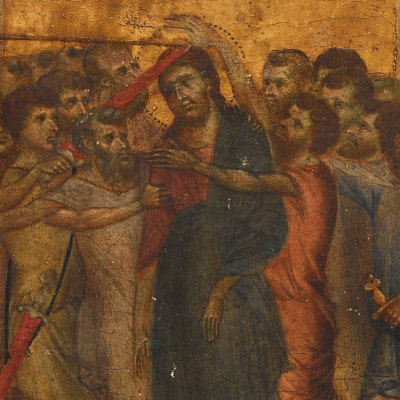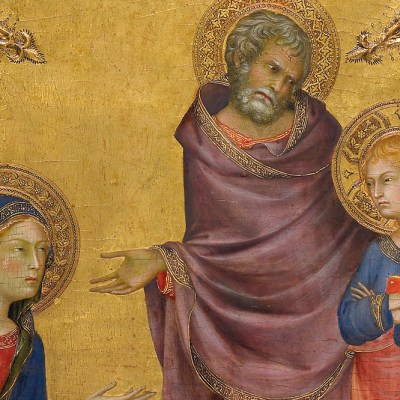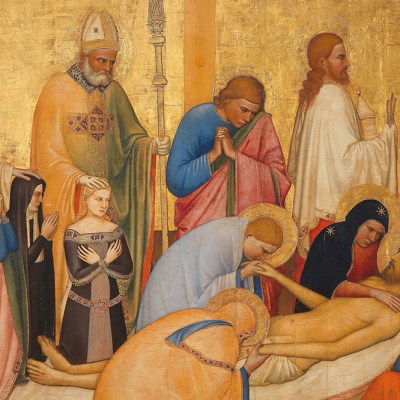In 2019, a small panel by the early Tuscan painter Cimabue, of whose works only a handful survive, was found hanging above a stove in a house in Compiègne, just north of Paris. Four years later, after auctions and export bars, the work, the Mocking of Christ (c. 1285–90), was bought by the Louvre for €24m – a purchase which was crowned acquisition of the year by Apollo. Now, after a process of cleaning and restoration, the work is on display at the Louvre alongside works by his near contemporaries Duccio, Giotto and another newly restored Cimabue panel, the massive Maestà (c. 1280), which was probably painted to be hung in the church of San Francesco in Pisa and has been in the Louvre since the time of Napoleon (22 January–12 May). Cimabue’s name has since been eclipsed by that of Giotto – often considered to be the first painter to break with the conventions of Byzantine art and develop a more characterful style that would go on to dominate in Italian painting – but both Dante and Vasari saw Cimabue as the ‘first light’ of the Renaissance.
Find out more from the Louvre’s website.
Preview below | View Apollo’s Art Diary
Mocking of Christ (c. 1285–90), Cenni di Pepo, called Cimabue. Musée du Louvre, Paris. Photo: © Gabriel de Carvalho/GrandPalaisRMN (musée du Louvre)

Maestà (c.1280), Cenni di Pepo, called Cimabue. Musée du Louvre, Paris. Photo: © Thomas Clot/C2RMF

The Flagellation of Christ (c. 1280), Cenni di Pepo, called Cimabue. The Frick Collection, New York




